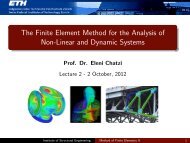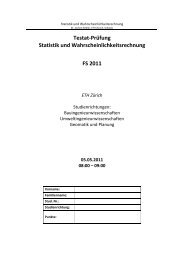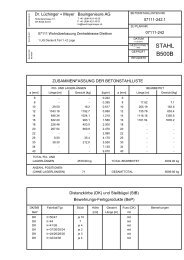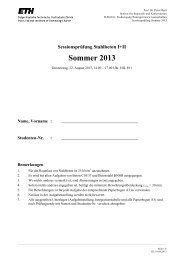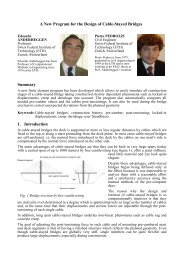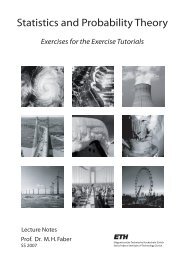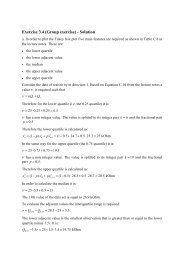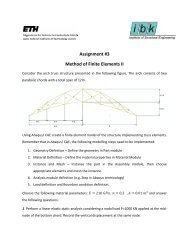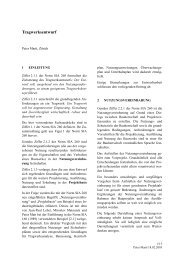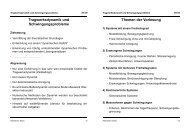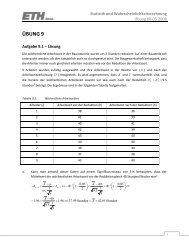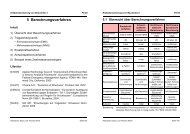The Finite Element Method for the Analysis of Non-Linear and ...
The Finite Element Method for the Analysis of Non-Linear and ...
The Finite Element Method for the Analysis of Non-Linear and ...
Create successful ePaper yourself
Turn your PDF publications into a flip-book with our unique Google optimized e-Paper software.
Example<br />
Also, <strong>for</strong> plane strain strain conditions <strong>the</strong> constitutive tensor is:<br />
⎡<br />
1 ν 0<br />
C =<br />
E<br />
⎢ ν 1 0<br />
1 − ν 2 ⎣<br />
1 − ν<br />
0 0<br />
2<br />
⎤<br />
⎡<br />
E=5000,ν=0.3<br />
⎥<br />
⎢<br />
⎦ → ⎣<br />
6731 2885 0<br />
2885 6731 0<br />
0 0 1923<br />
Now, using <strong>the</strong> assumption <strong>of</strong> small strain we can use <strong>the</strong> above constitutive<br />
tensor <strong>for</strong> <strong>the</strong> relationship between <strong>the</strong> PK2 stress <strong>and</strong> <strong>the</strong> Green-Lagrange strain.<br />
Hence from Eqn (1):<br />
⎡<br />
⎢<br />
⎣<br />
S 11<br />
S 22<br />
S 12<br />
⎤<br />
⎡<br />
⎥ ⎢<br />
⎦ = ⎣<br />
5770t 2<br />
13462t 2<br />
3846t<br />
⎤<br />
⎥<br />
⎦<br />
⎤<br />
⎥<br />
⎦<br />
Institute <strong>of</strong> Structural Engineering <strong>Method</strong> <strong>of</strong> <strong>Finite</strong> <strong>Element</strong>s II 14



